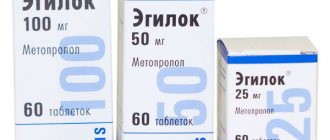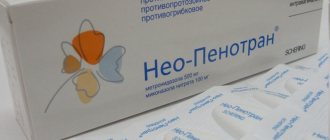Uterine fibroids are a gynecological disease that causes a lot of discomfort and pain, and a drug such as Esmya for fibroids can significantly ease a woman’s well-being and relieve her of painful symptoms. Myoma is a hormone-dependent tumor formed from the muscle tissue of the uterus. According to medical statistics, more than forty percent of women are susceptible to this disease, from the youngest to women in menopause. For a long time, the only way to get rid of further development of the tumor was surgery, but now, thanks to the unique properties of the new drug, it is possible to avoid this unpleasant procedure and save the uterus.
Causes and characteristics of the disease
Myoma or leiomyoma is primarily a benign tumor, the formation and further development of which occurs in the uterus or in its cervical part. The size of such a formation can vary, ranging from a few millimeters to tens of centimeters. Often a woman is diagnosed with multiple fibroids, consisting of several myomatous nodes. To control her growth and monitor her size, it is customary to take all measurements in weeks similar to the duration of pregnancy.
In medicine, terms are used that define the localization of fibroids relative to the surface of the uterus:
- subserous type of fibroids - forming from the outside;
- submucous appearance - with an internal location of the tumor;
- fibroids of these two types, formed on a stalk.
This type of tumor can form for a variety of reasons, the main one of which is considered to be sudden changes in a woman’s hormonal levels. There are also less significant factors that give rise to the formation of myomatous nodes, for example:
- heredity;
- infections occurring in the genitals;
- injuries to organs located in the pelvis;
- menstrual irregularities;
- excess weight;
- pathological changes in the endocrine and cardiovascular systems.
As the disease progresses and the tumor enlarges, patients may experience the following manifestations of fibroids, characteristic of each of its stages:
- heavy acyclic bleeding;
- disorders and disruptions of the menstrual cycle;
- pain in the lower abdomen and lumbar region;
- dysfunctions of the intestines and urination processes;
- increase in belly size.
It is necessary to be attentive to your body and be able to notice even minor signs of pathologies occurring in it. If you discover one of the signs of fibroid formation, you must immediately undergo examination by a gynecologist.
https://youtu.be/6hTOf95hoVk
Causes of uterine fibroids in women
The main reason for the formation of fibroids is considered to be hormonal imbalance caused by various external and internal factors. Myomatous formations more often occur in fairly young women with their active hormonal levels, and during menopause, when reproductive functions attenuate and hormonal levels with estrogen production decrease, the development of fibroids slows down. The main reasons causing the formation and further development of fibroids include:
- As mentioned above, these are primarily hormonal changes with an excess of estrogens and a lack of progesterones.
- Development of adenomyosis.
- Inflammation of the genital organs.
- Violation of metabolic processes.
- Diabetes.
- Various chronic pathologies.
- Stressful situations that last for a long time or are repeated periodically.
- Insufficient physical activity.
- Consequences of abortion.
- Using an IUD for longer than recommended.
- Inferior sexual relations without orgasm.
The development of fibroids can be facilitated by the use of oral contraceptives, as well as injury during diagnostic procedures, repeated medical abortions, sexually transmitted infections and incompletely cured inflammatory diseases of the reproductive organs. All these actions lead to hormonal disorders with an imbalance of the main sex hormones, which results in the formation of a tumor.
How are uterine fibroids treated?
The treatment used for a disease such as fibroids involves an integrated approach that involves delaying the growth of the myomatous node and its reverse development. Based on the type of tumors, their size, stage and other indicators, after the examination, individual treatment is prescribed. It is customary not to touch a small fibroid, but only to regularly monitor its behavior. If it behaves actively and increases, then complex hormone therapy is carried out together with herbal medicine.
Traditional therapeutic methods include:
- hormone therapy;
- fuse ablation;
- myomectomy;
- hysterectomy;
- embolization of the uterine arteries.
If the treatment did not help stop the growth of fibroids, malignant changes are detected in its cells, then more radical methods are resorted to. Until recently, it was possible to stop the development of fibroids only by removing them through surgery. This method, and the absence of such an important organ as the uterus, which was often removed along with the ovaries, did not add health to the female body. And there is no need to talk about the emotional side of these events; such a psychological shock was very difficult for women to bear. It became possible to avoid all this and preserve the reproductive organs, as well as your reproductive functions, with the advent of Esmiya, which today is considered a true panacea for eliminating fibroids.
Esmiya in the treatment of uterine fibroids
Doctors at the clinics with which we cooperate successfully use uterine artery embolization (UAE) to treat uterine fibroids. The procedure is a minimally invasive intervention: an endovascular surgeon, through a puncture in the femoral artery, into the blood vessels that feed the uterine fibroids, introduces particles of a special substance (emboli) that block blood flow. The muscle cells that form fibroids die without oxygen and nutrients and are replaced by connective tissue. After UAE, additional treatment of fibroids, including taking the drug Esmiya, is not required.
Indications and contraindications for UAE
Uterine artery embolization is performed in women who have given birth with symptomatic fibroids, patients who have entered menopause and who have a myomatous node measuring more than 2 cm. UAE is intended for those women who want to preserve reproductive function and do not want to undergo surgery.
Embolization of uterine fibroids is not performed if the following contraindications are present:
- severe renal failure;
- malignant neoplasms;
- infectious diseases of the ovaries and uterus;
- pregnancy;
- uncorrectable coagulopathies;
- autoimmune connective tissue diseases;
- acute anaphylactic reactions to radiocontrast drugs.
After consultation with a gynecologist and an endovascular surgeon, the patient is prescribed an examination. The woman is hospitalized in a hospital, where the level of comfort corresponds to European standards. The skin on the thigh at the puncture site is numbed with local anesthetic. The endovascular surgeon then inserts a catheter into the femoral artery. Under fluoroscopic control, the doctor first installs a catheter in the left uterine artery and then embolizes its branches supplying blood to the fibroid. He then places a catheter in the right uterine artery and injects an embolic drug into it.
Sometimes patients feel warmth in their legs or stomach during the procedure. This is a normal reaction of the body to the administration of a contrast agent. In some cases, nagging pain appears in the lower abdomen. These sensations pass quickly.
After embolization is completed, the endovascular surgeon removes the catheter from the femoral artery. In most cases, the duration of uterine artery embolization does not exceed 25 minutes. In rare situations, if there is a structural feature of the vascular system, the duration of the procedure increases, since more time is spent on installing the catheter in the uterine artery.
Possible complications of uterine artery embolization
During the first hours after the procedure, the patient may experience pain in the lower abdomen. They arise due to cessation of blood flow in the myomatous nodes, and indicate the effectiveness of embolization. At this time, doctors prescribe nonsteroidal anti-inflammatory drugs that have an analgesic effect to all patients. 10-15 hours after the intervention, the pain subsides. The next day after embolization of the uterine arteries, doctors discharge the patient from the hospital.
Full recovery after UAE takes an average of 3-7 days, while it takes a month to restore menstrual function after completion of therapy with Esmin. After the UAE procedure, patients experience a slight increase in body temperature for 5-10 days. It does not require the use of antipyretic drugs. The most common complication of uterine artery embolization is the formation of a hematoma at the site of puncture of the femoral artery. The bruise goes away on its own within 10-15 days.
Results of uterine artery embolization
By the first year after UAE, myomatous nodes are reduced in volume by 4 times, and the size of the uterus is normalized. Some fibroids located close to the uterine cavity may separate from the uterine wall and be “born” naturally. This leads to faster restoration of the uterine structure.
In patients, soon after UAE, the menstrual cycle normalizes, and signs of compression of neighboring organs disappear. After uterine artery embolism, women who have suffered from fibroid-related infertility can, if desired, give birth to healthy children. In order to perform embolization of the uterine arteries for uterine fibroids in the shortest possible time at a high technical level, please contact us.
Description of the drug
Esmya is a selective modulator of progesterone receptors, which allows it to be successfully used in the treatment of fibroids. The medicine is made in the form of round white tablets with a slightly creamy tint, on one side of which there is an engraving ES5.
The main active ingredient of the medicine:
- ulipristal acetate;
Its action is based on blocking progesterone receptors, which ultimately stops bleeding. In addition, fibroids shrink at any time, even in cases where there is only one option left - surgical removal.
As excipients, the drug contains:
- microcrystalline cellulose, mannitol, talc, magnesium stearate, croscarmellose sodium.
The main properties characterizing the capabilities of the drug Esmiya;
- acts directly on fibroid cells;
- stops the division of pathological cells and leads to their death.
Description of the product
Esmya is a unique drug. The main active ingredient is ulipristal acetate. This substance has a depressing effect on progesterone receptors. Namely, this hormone, or rather, its excess, is most often to blame for the formation of a tumor. Thanks to this effect, the tumor begins to decrease in size, and uterine bleeding stops. Moreover, its use is effective even with large tumor sizes. It makes sense to try treatment with pills even when surgery is indicated. Moreover, they can be prescribed not only to get rid of the tumor, but also in the preparatory period before surgery. Esmya not only destroys existing neoplasm cells, but also prevents their division, that is, it prevents new cells from appearing. And the direct effect on myomatous nodes stops bleeding.
How to use
Esmya is available in tablets packaged in 28 or 84 pieces, that is, the packaging is designed for 1 or 3 months. The tablets are round, white, with ES5 engraved on one side. Contains 5 mg of ulipristal acetate and excipients - mannitol, microcrystalline cellulose, talc, magnesium stearate, croscarmellose sodium. Instructions for use are approximately the same as for hormonal contraceptives. The first tablet must be taken within a week from the onset of menstruation, ideally on the first day of menstruation. Take one tablet daily with plenty of water, regardless of meals. You need to take the pills strictly at the same time, preferably in the evening. If for any reason a dose is missed, it must be taken within twelve hours of the missed dose. Esmia has a depressing effect on ovulation. Therefore, it is believed to have a contraceptive effect. However, it is better to also use barrier contraception (condoms) during the course of treatment. Menstruation also does not occur during the treatment period. Usually the cycle is restored within a month after the end of the course. Taking pills usually lasts from one to three months. The duration of the course will be determined by the doctor. The price of Esmiya is quite high - a monthly package can be purchased on average in Russia for 9-10 thousand rubles.
Limitations and Side Effects
Like any other medicine, Esmya has contraindications for use. This:
- pregnancy;
- lactation period;
- age less than 18 years;
- severe bronchial asthma;
- renal and liver failure;
- individual intolerance;
- uterine bleeding not related to fibroids;
- malignant tumors of the uterus and ovaries.
Before prescribing treatment with this drug to a patient, the doctor must conduct a thorough examination to take into account all the individual characteristics of her body and determine the advisability of drug treatment. In addition, side effects may occur during therapy:
- Nervous system disorders. The woman becomes anxious, overly sensitive, and tearful.
- Possible sleep disturbances - insomnia or, conversely, drowsiness. Fatigue, apathy, headaches and dizziness - such symptoms also develop in some cases.
- Digestive disorders. There are pains and cramps in the stomach, intestines, loose stools, and nausea. Food is less digestible.
- Deviation from women's health standards. Lumps and pain in the mammary glands may occur. Sometimes there is an unpleasant smelling vaginal discharge.
- Violations of appearance. Increased sweating and acne are some of the possible consequences of taking Esmya. In addition, like other hormonal drugs, in some patients it contributes to excess weight gain and the formation of edema.
When prescribing the drug, the predicted chance of getting rid of fibroids must exceed the possible risks. If side effects occur and do not go away on their own over a long period of time, you should consult your doctor. In general, the entire course of treatment should be carried out under the constant supervision of a specialist.
Properties and advantages over other medications
The hormonal drug Esmya has antihistogenic properties, due to the content of the patented substance uliprestal acetate, it directly acts on the nodes of fibroids, stops the growth of its tissues and causes the death of tumor cells. As a result, under the influence of the therapeutic agent, the tumor begins to shrink, which is also important during the period of preparation for surgical removal of fibroids, as it allows you to reduce the volume of tissue removed.
When treating fibroids, the use of Esmiya normalizes blood loss during menstruation and prevents the development of anemia. Compared to previous drugs used to treat myomatous formations, the new drug has a number of advantages:
- Reduces the activity of progesterone receptors, resulting in a decrease in the amount of hormones and a halt in tumor development.
- By acting on the pituitary gland, it acts as a contraceptive.
- Does not cause a decrease in estrogen levels, does not reduce bone density.
- It affects only damaged myometrial cells.
- Has an antimicrobial effect, suppressing the development of infections.
- Stops uterine bleeding of any intensity, eliminates pain symptoms, and prevents the development of anemia.
- Restores fertility to women.
- It has a cumulative effect, the therapeutic effect lasts for at least six months after stopping the drug.
- It is well tolerated by patients and has virtually no side effects.
Despite all the positive properties of Esmiya, treatment should only be carried out as prescribed by a doctor. It is unacceptable to take this drug on your own, as this is fraught with serious complications.
Esmya for leiomyoma
Description and annotation
Esmya is a hormonal, antigestagenic drug recommended for the treatment of uterine fibroids. The active ingredient is ulipristal, which is the secret to the effectiveness of this product. The fact is that ulipristal has a direct inhibitory effect on progesterone receptors. But scientists have proven that it is an excess of this hormone in a woman’s body that in most cases leads to the growth of uterine leiomyoma. This substance also affects the pituitary gland, which explains the contraceptive effect of the drug.
According to experimental scientific studies, it was found that it is practically impossible to become pregnant while undergoing treatment with this drug. Menstrual bleeding also stops during this period. Usually the menstrual cycle is restored within a month after stopping treatment. An important property of this drug is its direct effect on uterine fibroid cells. Esmia has a suppressive effect on the division of myomatous cells and promotes their self-destruction. As a result, the growth of fibroids is inhibited, and then, gradually, the tumor begins to decrease in size. In addition, the drug Esmya has the ability to stop even very severe uterine bleeding caused by leiomyoma, by directly affecting the so-called myomatous nodes.
Release form of the drug
The medicine is intended for internal, oral administration and is available in the form of white tablets. The drug is recommended for use for uterine fibroids of mild to moderate severity, as well as before surgery on the uterus and during the postoperative period. After all, according to gynecologists, this drug can significantly reduce the level of surgical intervention. And, thanks to a course of treatment with this medication before surgery, it is possible to limit the removal of myomatous nodes, while preserving the uterus itself.
Release form and composition
Esmya is available in the form of tablets containing 5 mg of ulipristal acetate.
Tablets 14 pcs. packaged in a blister and in cardboard boxes of two or six blisters, have a round shape with an engraving on one side, which is evidence of the authenticity of the drug. This medicine has a fairly high price, which averages about 9 thousand rubles per package, and in other regions other than Moscow, the cost of Esmya may be slightly higher or lower.
Who is it prescribed for and how to take it
The drug Esmya for fibroids can be prescribed to all patients over 18 years of age if they have myomatous nodes in the moderate and severe stages. It is also used in preoperative preparation for fibroid removal to reduce the size of the tumor and make the operation less traumatic.
The instructions attached to the drug indicate that the course of treatment is three months, repeated, if necessary, after a two-month break.
It will be enough to take just one tablet containing 5 mg of the main substance per day. Treatment begins at the beginning of the cycle, and in order for the concentration of the drug in the blood to be constant, it must be taken at a certain time. If the patient does not take the pill at the prescribed hour, then this can be done in the next 12 hours. If the missed time is longer, then the appointment is carried out only the next day at regular hours.
Features of taking the drug
Esmiya is 14 tablets in one blister. Depending on the complexity and nature of the disease, the doctor prescribes them for the woman. The complexity of the pathology and the individual characteristics of the patient’s body are of no small importance.
It is recommended to take the drug
once a day, one tablet. It is best to take it with a small amount of liquid.
The course of treatment is carried out over several months.
The instructions for use state that the first tablet should be taken on the first day of the menstrual cycle.
It is best to take the pill at the same time every day.
If during a certain period such an opportunity was absent, then this treatment deficiency should be eliminated as quickly as possible. It is advisable to do this within the next 12 hours. In some cases, it is advisable to reschedule the appointment to the next day.
Important! When the substance enters the body, progesterone receptors are blocked. Thanks to this, it is possible to get rid of bleeding from the uterus within a short period of time.
Side effects and contraindications
Although the drug is unique and can significantly improve the life of patients with uterine fibroids, it nevertheless has some contraindications, and during therapy it can cause side effects:
- the appearance of headaches accompanied by dizziness;
- unreasonable feelings of anxiety;
- attacks of nausea, pain in the abdomen, problems with stool;
- increased sweating and skin rashes;
- backache;
- breast pain;
- weight gain;
- tides;
- formation of edema.
The appearance of these symptoms does not always cause a complete refusal of treatment with Esmiya; perhaps the doctor will prescribe a lower dosage. The following body conditions should be taken into account as contraindications:
- individual intolerance to one of the components;
- persons under eighteen years of age;
- uterine bleeding of unknown origin;
- malignant lesions of the internal genital organs;
- severe stages of bronchial asthma;
- period of pregnancy and lactation;
- under control - for kidney and liver diseases.
Despite the existing list of contraindications, Esmya is easily tolerated by patients and is not capable of having such far-reaching effects on the body as other hormonal drugs used for similar diseases. Often, the adverse effects can be eliminated by reducing the dose of the drug, which allows you to continue treatment and achieve the expected result.
Side effects of Esmya
Reviews about Esmya report that in most cases hot flashes occur during therapy. The following adverse reactions from the body are also possible:
- Psyche: emotional disturbances, anxiety;
- Central nervous system: headaches, dizziness;
- Metabolism: increase in body weight;
- Balance and hearing: vertigo;
- Respiratory system: nosebleeds;
- Digestive system: abdominal pain, dyspepsia, nausea, dry mouth, constipation, flatulence;
- Skin and subcutaneous tissue: acne, sweating, skin lesions;
- Musculoskeletal system: pain in muscles, bones and back;
- Urinary system: urinary incontinence;
- Breast and reproductive system: amenorrhea, metrorrhagia, endometrial thickening, ovarian cyst, tenderness or tightness of the mammary glands, rupture of an ovarian cyst, pelvic pain, vaginal discharge;
- Other: asthenia, edema, increased concentrations of cholesterol and triglycerides in the blood.
According to reviews of Esmya, patients with heavy menstrual bleeding caused by uterine leiomyoma are at risk of increased blood loss. In such cases, surgery may be required.
Reviews from doctors
Doctors generally respond positively to the use of Esmiya for the treatment of patients with fibroids. In the case of a timely diagnosis and subsequent therapy with this drug, it is possible to obtain an almost one hundred percent successful result and refuse surgery. Here, correct treatment and strict adherence to all medical recommendations are of great importance, since otherwise the opposite effect can be achieved. The course of treatment should be carried out under the constant supervision of a gynecologist, monitoring changes in the condition of the tumor using ultrasound. As for intolerance to Esmiya, although this is possible, in practice it happens quite rarely. In these cases, adjusting the dose of the drug helps. Doctors have established the opinion that the use of Esmiya for fibroids allows one to avoid surgery, and in severe cases with advanced tumors, to reduce the amount of surgical intervention in the body.
Contraindications
The drug should be taken only when prescribed by a specialist, after a thorough medical examination. After all, according to reviews from doctors, Esmia, with all its unique positive properties, has quite a lot of contraindications.
These include:
1. Tendency to uterine bleeding.
2. Cancerous tumors (especially when it comes to ovarian or cervical cancer).
3. Bronchial asthma.
4.Individual intolerance.
5. The course of treatment with Esmya cannot be combined with taking other hormonal drugs.
6. Liver diseases.
7. Severe diseases of the renal system.
8. The drug is contraindicated for the treatment of patients under eighteen years of age.
It is also not recommended to take Esmya during pregnancy. Although at present the issue of the effect of this drug on the fetus has not yet been sufficiently studied, however, drugs containing ulipristal are generally contraindicated for pregnant women and nursing mothers.
We recommend watching a video about the mechanism of action of Esmya for uterine fibroids.
https://youtu.be/Ne7_s7cFl2M
Patient reviews
Women themselves are generally satisfied with the treatment, especially when, with the help of Esmiya, surgery can be avoided. You can leave your reviews and results of treating fibroids with the drug in the comments below, they will be useful to other users!
Lera, 42 years old:
I decided to share the results of myoma treatment; the gynecologist prescribed me the drug Esmiya. Frankly, I doubted it at first, since the medicine is hormonal, and this always scared me. And it’s quite expensive, but I decided to do it. As a result, the tumor did not shrink, although it did not grow. They offered to repeat the treatment, but I have some doubts; maybe I’ll still agree to the operation before the tumor starts to grow. I think for now.
Nastya, 29 years old:
I took a full pack of pills and didn’t feel anything bad, although the doctor warned about the possibility of side effects. An ultrasound showed a reduction in the size of the tumor by as much as 0.9 cm, I continue treatment, I still need to drink for two whole months.
Olga 37 years old:
I hoped for this medicine, but my expectations were not met. It seems that the tumor began to react and shrink, but then resumed growth. This remedy is not suitable for me, I won’t risk it anymore and I agreed to undergo surgery.
Esmiya. Panacea for fibroids? Miracle drug? My experience of taking the medicine. - review
Vasilisa @waino.schowalter
2019-02-24 08:06 review
Uterine fibroids - I was diagnosed with this diagnosis back in 2008. But the nodule was small in size (about 1-1.5 cm) and for 10 years I heard only one thing from doctors - “observe” (which is a terrible misconception and speaks of the backwardness and unprofessionalism of the doctor). That's what I did regularly - I was examined 1-2 times a year.
She was “followed up” to the point that in December 2020 she was hospitalized with acute inflammation of the node in the district hospital, where it was revealed that the node had grown from 1.5 cm to 5.5 cm - 6 cm. During the examination, multiple nodes of different types were also diagnosed throughout the entire area of the uterus. The doctors at the hospital administered antibiotic therapy (!!!) and discharged me with the recommendation: “keep an eye on me.”
Since I am planning a pregnancy, such carelessness of doctors at a government institution alarmed me very much, and thanks to chance, I was recommended to consult a gynecologist of the highest category in one of the best clinics in Moscow. After performing the examination, the Doctor grabbed her head and said that I had all the indications for complete removal of the uterus and I needed urgent surgery.
I’ll note right away that at the time of the examination, my hemoglobin level was 98 g/l. Also, the appointment coincided with the beginning of the menstrual cycle (and this means new large blood losses). Plus, preoperative preparation was required. And only based on these indications, the Doctor decided to urgently prescribe Esmya to me.
To restore the level of hemoglobin, in parallel, I took Maltofer (1x3 times a day - 3 months) (Review of taking Maltofer -)
Having learned about the considerable cost of the drug, 8-8.5 thousand rubles, I, of course, went online and began reading various reviews. Maybe by spending that kind of money (the duration of the course is 3 months, i.e. approximately 24 thousand per course), these tablets will help solve the problem of fibroids and eliminate the need for surgery?
At the next consultation, I asked these questions to the doctor and she categorically answered me - “This drug does not remove or resolve any fibroids. And it is necessary only for preoperative preparation and as a drug to stop menstruation, which, due to a decrease in hemoglobin levels due to the disease, is strictly prohibited.”
Therefore, we dispel the myths about complete healing when taking Esmya. This drug may briefly slow down the growth of fibroids. For whom is this possible? For premenopausal women. You take several courses, and then suddenly menopause will come. If you are of reproductive age, Esmya is not a panacea. And in 99% of cases it is necessary to resort to surgical treatment. The earlier the better. Don’t flatter yourself with hopes that this problem will somehow be solved on its own. My Doctor simply grabs his head and asks women to immediately contact good specialists and not be afraid of surgical intervention. Today, a huge number of methods have been invented to get rid of this muck in the early stages of diagnosis. I pass on her words to all of you girls. Of course, in free clinics no one will offer you surgery. As one of the doctors at the municipal hospital put it, “every self-respecting woman aged 35-45 years has fibroids.” Everyone should worry about their health on their own.
As for the drug Esmya itself. I took the entire course - 3 months. I have experienced almost all the side effects described in the instructions. The drug is very heavy. I took the first pill on the first day of the cycle with the hope that the bleeding would stop and I could go to surgery. But no! Menstruation passed as usual, very profusely, lasting 6-7 days. Those. Why I started taking the drug was to cancel menstruation, it didn’t work in the first month. I had to postpone the surgery date by two weeks. Further, starting from the first days of taking it, I experienced almost all possible side effects from the list. It is very interesting that every week some side effects disappeared, but others were added. In the first weeks, these are vascular reactions - dizziness, nausea, palpitations, night panic attacks, I cried with or without reason (but this is also due to accumulated stress). Then more serious symptoms developed, such as nosebleeds, terrible pain and aching joints, etc. by the list. When I had my next appointment with the Doctor, I asked with tears to stop Esmya, but the drug is hormonal and you can’t just take it and stop it, so the Doctor advised me “well, just be patient a little longer, the pills are heavy.” As a result, I completed the course completely, marking each day of admission on the calendar. The day of the last pill was celebrated as a holiday.
Last pill
By the way, I was very interested in the question: how quickly will the menstrual cycle be restored after taking Esmya? I couldn't find a clear answer anywhere. The doctor assured me that my period would begin no earlier than 4 weeks after taking the last pill. In my experience, everything happened exactly 14 days later (when I was just on vacation at sea)).
To summarize:
1) please, under no circumstances prescribe Esmia yourself. This drug must be taken strictly under the supervision of a doctor. Has a huge number of side effects. Before taking it, the doctor must assess the possible benefits of the drug and the extent of the harm caused to your health.
2) this is not a panacea in the treatment of fibroids. There have been analogues of this medicine for a long time, which have shown to be ineffective. Esmya is another highly advertised pharmacological brand, which, of course, has a right to exist.
3) Esmya is not a “cure for fibroids,” as we all think when we start taking the drug, but only an auxiliary hormonal agent that helps slow down or alleviate the disease process.
4) in my case, Esmya was prescribed as a drug to prepare for surgery and postoperative rehabilitation.
I wish everyone to find their doctor and not be afraid of surgery.
In 6 months I have already undergone 2 operations (laparoscopy). My Doctor is observing me and promises that everything will be fine!
Well, all I have to do is trust, wait for a miracle and hope only for the best!
Health to everyone!
Is it possible to use it together with the boron uterus?
Many patients try to find effective ways to treat fibroids among folk recipes, however, no herbs can change the causes of tumor formation. In any case, if you are going to take advantage of folk experience, you first need to discuss this method with your doctor. Thus, the use of St. John's wort is contraindicated in this case, and the same applies to a plant such as boron uterus. As you know, with its help it is possible to get rid of uterine bleeding and heavy menstruation. However, when treated with a drug such as Esmya, there is no menstruation at all, so the additional hemostatic effect of this plant can lead to undesirable consequences.
“Esmiya” is a drug for “managing” uterine fibroids
The origin of fibroids is still a source of scientific debate. But recently it was found that one of the key factors in the growth of myomatous nodes is one of the female sex hormones - progesterone. Myoma nodes are very susceptible to this hormone because their cells have progesterone receptors.
This discovery served as the impetus for the creation of a new class of drugs - progesterone receptor blockers in fibroid cells. In pharmacology, such drugs are called selective progesterone receptor modulators (SMPR). The first known representative of this group is the drug Esmiya.
When ingested, Esmiya penetrates the cells of the myomatous node and selectively binds to intracellular progesterone receptors, thereby blocking the action of this hormone. This happens with the help of the active substance ulipristal acetate. In addition, this drug also affects other organs.
The effect of Esmya on the body is as follows: reduction of myomatous nodes, absence of hot flashes due to the effect on the pituitary gland, reduction and cessation of uterine bleeding due to changes in the structure of the endometrium.
So, Esmiya has a direct effect on three types of target tissues:
Myomatous nodes
By blocking progesterone receptors in tumor nodes, the drug inhibits its growth. It causes apoptosis (accelerates the death of old cells) and does not allow new ones to grow (that is, it inhibits proliferation).
Pituitary
Ulipristal acetate, acting on the pituitary gland, suppresses the activity of progesterone by reducing the level of luteinizing (LH) and follicle-stimulating (FSH) hormones, while maintaining the concentration of estrogen at a normal level. This is very important so that women do not experience hot flashes that occur with other drugs.
Also, due to its direct effect on the pituitary gland, Esmiya inhibits ovulation, which causes amenorrhea and complete cessation of bleeding.
Endometrium
The third target tissue that ulipristal acts on is the endometrium. This leads to a rapid reduction and even complete cessation of intrauterine bleeding. Bloody discharge disappears on the 4-7th day of taking the drug and continues to be absent throughout the entire course of treatment. After completion of therapy, the menstrual cycle is restored and returns to normal after 3-4 weeks.
After stopping taking Esmiya, the first menstruation begins after 4 weeks, and full ovulation is possible in the next cycle.
Esmiya has this effect on all types of fibroids, regardless of their size and location. Course therapy provides a reduction in the volume of nodes and control of heavy menstruation caused by fibroids. The drug not only triggers a reversal of the symptoms of the disease, but also retains its effect after the end of treatment.
Does it make women fat?
Women often note that after a course of treatment they gained weight and their waist circumference increased. Although this is not such a frequent indicator, apparently, changes in hormonal levels have an effect, since it is completely individual for each female body. The psychological state may also have an effect when, due to the good results from the treatment, the mood may improve and an emotional upsurge may occur with an increase in appetite; women, without noticing it, begin to eat more, giving preference to sweet and fatty foods. In any case, some abstinence will not hurt, so you need to monitor the calorie content of your diet.
Reviews
Not only doctors, but also many patients recommend Esmiya. Reviews for fibroids from specialists are always positive. Even if it is not possible to get rid of the tumor completely using medication, or to significantly reduce its size, it is still the same - this remedy prepares the woman’s body for subsequent surgery. Feedback from patients is also generally positive. Negative ones, as a rule, are associated with the fact that the woman experienced multiple side effects, as a result of which Esmya had to be stopped. In general, we can say that if there is even the slightest chance of getting rid of the tumor without surgery, then Esmya can give it. Marina K., 36 years old : Good afternoon! I have experience taking Esmya. I’ll share, maybe my story will help someone. A few years ago I was diagnosed with a fibroid one centimeter in diameter. I get examined regularly, so I know that for four years it was unchanged. And then suddenly it began to grow sharply. Another ultrasound showed that I now have two large fibroids – 8.9 and 4.7 cm, plus several more small ones. I was afraid that now I could only have surgery, but the gynecologist advised me to try Esmia first. I drank it for three months. They write that your periods stop, but they didn’t stop for me, they just became less abundant. Around the middle of the course, hot flashes, pressure surges began, and apathy appeared. I didn’t want to do anything at all, just sleep. Plus back pain. It’s good that I work at home, otherwise I wouldn’t be able to travel anywhere. After treatment, an ultrasound was performed again. Both large fibroids shrank by about a centimeter, and the small ones united in pairs. After the break, the doctor recommended a repeat course. I’m going through it right now and hope for a favorable result. True, side effects have tormented me from the first days. One day I feel fine, then for two or three days I can barely crawl, I have no strength at all. But I’m still happy with Esmia, at least so far without surgery, and I hope that at the end of the treatment it won’t be needed at all. Daria Kuzmina, 40 years old : I read a bunch of bad reviews about Esmiya, so I want to share my experience. Girls, the drug actually works! It was like that for me. Five years ago they found a fibroid, and not a small one, about 6 by 8 centimeters. My old-school gynecologist said that it was necessary to remove the uterus. The condition was terrible. Soon I switched to another specialist, but he gave the same verdict. I stalled for time as best I could, not agreeing to the operation. I don’t know what I was hoping for, that it would probably go away on its own. Then a new commercial clinic opened, and I decided to go there. The local gynecologist advised me to drink Esmia, and I agreed. This was the chance I had been waiting for. And during this time the fibroids almost doubled in size! I was afraid to take pills, they have a lot of side effects, but the operation scared me even more. During the course of treatment, I probably experienced all the side effects. And nerves, and diarrhea, and insomnia, and acne - I just remembered my youth. Thank God, my husband endured everything. Two months later, an ultrasound showed a real miracle: the fibroids became 2 times smaller! I still need surgery, but not to remove the uterus, but to excise fibroids. Esmia helped me save my organ, and I am very happy. Natalya Ivashchenko, 32 years old : I drank four packs of Esmiya as prescribed by the doctor. At first I had periods, then they suddenly stopped and did not occur again during the course. Nothing hurt me. Only my psyche was a little shaken. She was constantly nervous about trifles, sometimes crying, sometimes angry. For some reason, I lost a lot of weight and my vision deteriorated, but I don’t know if Esmiya has anything to do with this. An ultrasound showed that the fibroid had shrunk by half. It was 6.5, now it’s 3.3 cm. The doctor said the result was great, I’m happy too. Now I'm preparing for surgery. In principle, I took Esmia to prepare for surgical treatment. I think the results of taking it are individual for everyone. Therefore, you can find both rave reviews and sharply negative ones. In general, I want to say that Esmiya is not a panacea. It is impossible to get rid of fibroids without surgery, because after completing the course it will begin to grow again, and you won’t be taking pills for the rest of your life. But the preparation for the operation is excellent. Katerina, 32 years old : I drank Esmiya for 84 days. My periods disappeared, everything was as it should be, there were no significant side effects either, so I decided that I should expect good results. My periods returned a month after finishing the course, everything was exactly as instructed. The triumphant woman went to the doctor. But he was not very happy. The result turned out to be so-so. One myoma was 73x57 mm, now it is 64x49 mm. The second from 27x22 mm decreased to 24x17 mm... In general, the result, although positive, is insignificant. The operation will have to be done anyway, I just wasted so much money in vain. It's good that the situation didn't get worse. Still, I had to try everything before proceeding with the operation. At least I was able to write a review, maybe it will help someone make a choice. Anna Solomatina, 41 years old : Several years ago there was a frozen pregnancy followed by cleansing. During pregnancy, fibroids were also discovered. After the cleansing, the doctor was afraid to prescribe progesterone drugs, because then the fibroids could still grow. Nominated Esmia. I took it for three months. Myoma decreased by 5 mm. Although both the doctor and I hoped that it would be at least 50%, but I only have 10%. During treatment, I experienced severe pain in my joints, weakness, and chills. In general, the entire three months passed in such a state as if I had a slight cold. Even the temperature sometimes rose to a little over 37. In general, in my case, Esmiya did not bring the result that I would like. Apparently it affects everyone differently.
Read more Is there such a thing as internal herpes?
How does it work on hair?
Some patients who are prescribed the drug Esmya fear that it can affect hair growth and it will begin to fall out. Such cases are described very rarely and are mainly caused not by the influence of the drug, but by the state of a weakened body from anemia caused by heavy bleeding from fibroids. If this happens, you must first contact your gynecologist, who has prescribed treatment, undergo the necessary tests and find out what your body is missing or the reason for what is happening is a change in hormonal levels.
Esmia and vaginal discharge, bleeding
This drug affects hormonal levels; a lack of progesterone leads to functional changes in the uterus in the form of an underdeveloped epidermis. As a result, myomatous nodes stop growing, and the result is the absence of menstruation, since there is simply nothing to reject. In the first month of taking the drug, there is spotting brownish discharge, which increases somewhat during the period of expected menstruation. This is also observed in the second month of treatment; in the third month, menstruation is no longer observed, and intermediate vaginal discharge also does not occur.
ESMIA
Pharmacodynamics
Ulipristal is an orally active synthetic selective progesterone receptor modulator (SMPR), characterized by a tissue-specific partial antiprogesterone effect.
Endometrium
Ulipristal has a direct effect on the endometrium. When starting a daily dose of 5 mg of the drug during the menstrual cycle, most women (including patients with fibroids) end up with one menstrual bleeding, and the next one does not occur. When the drug is stopped, the menstrual cycle usually resumes within 4 weeks. Direct action on the endometrium leads to class-specific changes in the endometrium associated with an antagonistic effect on progesterone receptors (Progesterone Receptor Modulator Associated Endometrial Changes (PAEC)). As a rule, histological changes are represented by an inactive and weakly proliferating epithelium, accompanied by asymmetry of growth of the stroma and epithelium, pronounced cystic expansion of the glands with mixed estrogenic (mitotic) and progestogenic (secretory) effects on the epithelium. Such changes were observed in approximately 60% of patients receiving ulipristal for 3 months. These changes are reversible and disappear after cessation of treatment and should not be mistaken for endometrial hyperplasia.
In approximately 5% of patients of reproductive age with severe forms of menstrual bleeding, the thickness of the endometrium is more than 16 mm. In 10-15% of patients receiving ulipristal, the endometrium may thicken (> 16 mm) during treatment. This thickening disappears after stopping the drug and resuming menstrual bleeding. If endometrial thickening persists longer than 3 months after completion of treatment and restoration of the menstrual cycle, additional examination should be performed to exclude other diseases.
Leiomyoma
Ulipristal has a direct effect on leiomyomas, suppressing cell proliferation and inducing apoptosis, which leads to a decrease in their size.
Pituitary
When taking ulipristal daily at a dose of 5 mg, ovulation is suppressed in most patients, as evidenced by maintaining progesterone concentrations at about 0.3 ng/ml.
When taking ulipristal daily at a dose of 5 mg, the concentration of follicle-stimulating hormone (FSH) is partially reduced, but the concentration of estradiol in the blood plasma in most patients is maintained at the level of the mid-follicular phase and corresponds to that in the placebo group.
Ulipristal does not affect the concentration of thyroxine-binding globulin (TBG), adrenocorticotropic hormone (ACTE) and prolactin in the blood plasma during 3 months of treatment.
Preclinical safety data
Preclinical studies of pharmacological safety, repeated dose toxicity and genotoxicity have not identified potential threats to humans. The main findings in general toxicity studies are related to the effect on progesterone receptors (as well as on glucocorticosteroid receptors when using the drug in higher concentrations), with antiprogesterone activity at exposures close to therapeutic in humans. A 39-week low-dose study in monkeys showed changes similar to RAEC. Due to its mechanism of action, ulipristal causes fetal death in rats, rabbits (at repeated doses above 1 mg/kg), guinea pigs and monkeys. The safety of the drug in relation to the human embryo has not been established. At doses small enough to maintain pregnancy in animals, no teratogenic potential has been identified. Reproduction studies in rats using doses equivalent to human exposures showed no evidence of effects on the reproductive capacity of animals treated with ulipristal or their offspring.
In studies conducted on mice and rats, the carcinogenic effect of ulipristal was not revealed.
Clinical efficacy and safety
The efficacy of fixed doses of ulipristal 5 mg and 10 mg once daily was assessed in two phase 3 studies in patients with very heavy menstrual bleeding caused by uterine fibroids.
Compared with placebo, a clinically significant reduction in the volume of menstrual blood loss was detected in patients taking ulipristal. This made it possible to quickly and more effectively correct anemia than when prescribing iron supplements alone. The reduction in menstrual blood loss in patients in the ulipristal group was comparable to the group receiving the gonadotropin-releasing hormone agonist (leuprorelin). In most patients receiving ulipristal, bleeding stopped during the first week of treatment (amenorrhea developed).
According to magnetic resonance imaging, there was a significantly greater reduction in the size of uterine fibroids in the ulipristal group than in the placebo group. In patients who did not undergo hysterectomy or myomectomy, a decrease in the size of uterine fibroids was assessed by ultrasound control at the end of treatment (week 13). As a rule, it persisted throughout the 25-week follow-up in patients in the ulipristal group, while in the group receiving leuprorelin there was a slight increase in the size of uterine fibroids.
In another phase 3 study, in which patients received 2 courses of ulipristal 10 mg for 3 months, the incidence of amenorrhea was comparable at the end of both courses of therapy. The reduction in leiomyoma volume recorded during the first course was maintained during the second course. Taking into account the results of previous studies, the effectiveness of the drug at a dose of 5 mg during the first course of therapy will be the same during the second course of therapy, similar to a dose of 10 mg.
Despite the limited number of patients completing four 3-month courses of treatment, the safety data obtained were sufficient to justify one additional 3-month course of therapy in the preoperative period.
Analogs
In some cases, it is impossible to carry out treatment with the drug Esmya, since there may be individual non-acceptance of its active substance or other reasons may arise. In this case, the gynecologist has the right to offer possible analogues as a replacement. Most often, for this purpose they resort to the drug Norkolut, with the active substance in its composition in the form of norethisterone. Also, drugs with similar effects are used as analogues in the form of:
- Ginestril;
- Epigallate;
- Gyneconorma;
- Epigalina;
- Stella;
- Zoladex;
- Quinola;
- Decapeptyl, etc.
They have similar pharmacological properties and general indications for use. However, you cannot replace Esmya with similar medications yourself; this should only be done by the attending physician if indicated.
Interesting video:











